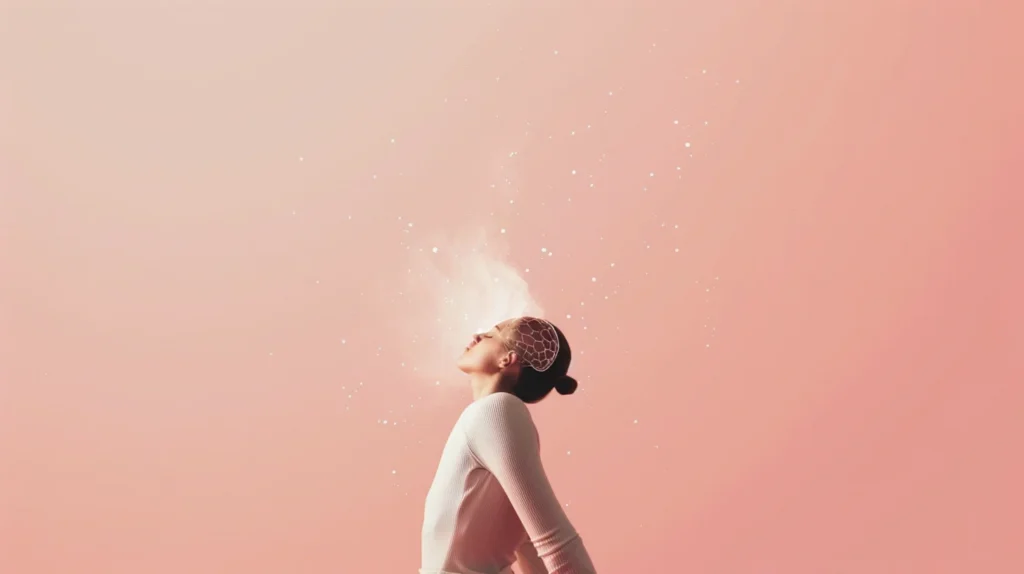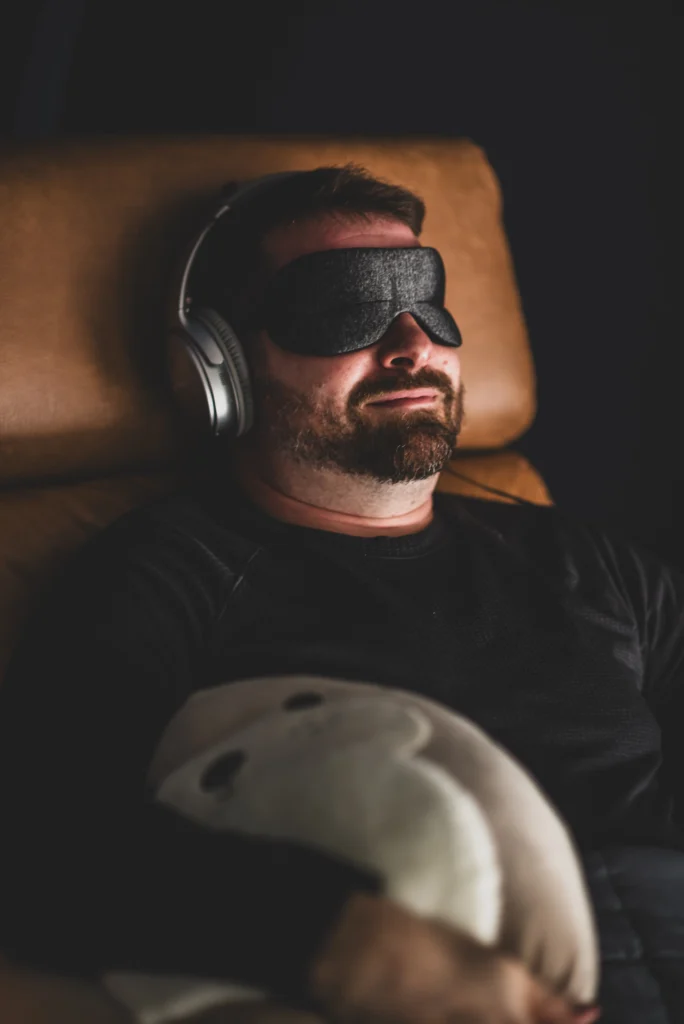
If you’re reading this, I suspect you – or someone you love – has spent far too many nights bargaining with cravings, wrestling with guilt, or scrolling through yet another article or TikTok promising a miracle cure for addiction. I know that sense of urgent hope mixed with skepticism because, in my clinical practice and research career, I’ve listened to hundreds of people tell me they feel “broken” after standard detox or talk therapy failed them. Even if frustration makes you look elsewhere, there has been a surprising change in medicine: ketamine, which used to be only for surgeries, is now changing how we treat mental health and addiction.
When I first began studying ketamine nearly a decade ago, only a handful of specialized clinics were experimenting with its mental-health applications. Today, the American Society of Ketamine Physicians reports that between 1,200 and 1,500 clinics operate in the United States – an astonishing leap from roughly sixty in 2015. I’d argue that these numbers reveal more than a trend. They signal a paradigm shift propelled by science, unmet clinical needs, and patient demand for rapid relief.
But growth alone is not a guarantee of safety or quality. A 2023 survey cited by the same professional society found that roughly 55% of people who used at-home psychedelic therapy admitted to taking more than the recommended dose. Poison-control centers are also recording more ketamine exposures – up 81% from 2019 to 2021. Those stats should compel you and me to insist on physician-led protocols, meticulous screening, and structured psychotherapy rather than quick fixes delivered in isolation.
In my experience, psychedelic therapy stands out not only for its rapid antidepressant effects but also for its remarkable ability to drive behavioral change. Studies show that up to 70% of patients with treatment-resistant depression experience significant improvement. Even more relevant to you if addiction is the core struggle, psychedelic therapy can reduce cravings, ease withdrawal symptoms, and help rewire thought loops that perpetuate substance use.
Addiction 101: Why Conventional Methods Often Let Us Down
To see why psychedelic therapy might change everything, it helps to know how addiction takes over the brain. The addiction condition is less about moral failure and more about chronic neuroadaptations involving dopamine, glutamate, and stress circuits that lock you into narrow behavioral grooves. Those pathways become so entrenched that sheer willpower rarely suffices to break them. Traditional addiction treatments – detox units, substitution medications like methadone, or weekly cognitive-behavioral therapy – undoubtedly save lives, yet relapse rates hover around 40 to 60% within a single year. I can tell you that many of our clients arrive at Field Trip Health after exhausting those standard options and feeling frustrated by their own “failures.”
Another limitation of conventional care is its slower timeline. Antidepressants can take six to eight weeks to lift mood, and psychotherapy usually demands months of consistent attendance before traction appears.
Addiction, by contrast, feeds on immediacy: cravings spike, distress rises, and before you know it, another relapse has occurred. What many crave is a treatment that can blunt that urgency quickly enough to keep them engaged in longer-term habit change. Psychedelic therapy, with its rapid action on mood and craving, offers exactly that window of opportunity.
Ketamine’s Unique Pharmacology

Ketamine’s mechanism of action differs fundamentally from any other anti-craving or antidepressant medication you may have tried. Instead of primarily tweaking serotonin or dopamine, ketamine blocks the NMDA receptor, a key gateway for the neurotransmitter glutamate. This brief blockade sets off a cascade: brain-derived neurotrophic factor (BDNF) surges, the mTOR pathway activates, and synaptic proteins proliferate.
In plain language, ketamine sparks a burst of neuroplasticity – your brain’s ability to reorganize and build new connections.
I often compare the effect to hitting a “refresh” button on rigid neural networks. For someone trapped in automatic craving-use cycles, new pathways can loosen the grip of habit and allow healthier responses to emerge. Just as important, ketamine’s rapid antidepressant profile can relieve the emotional pain – despair, shame, or anxiety – that fuels substance use for many people. Mood improvements can appear within 24 hours.
There is also a psychological dimension you can’t capture solely through neurochemistry. Many patients experience what scientists call “mystical-type” phenomena: a sense of unity, profound insight, or emotional catharsis.
In my clinic, clients often describe emerging from a session with an unshakable feeling that they are “not broken” after all. That shift in self-perception provides fertile ground for psychotherapy, because insight becomes intrinsically motivating – you want to protect and nurture the healthier self you glimpsed.
What the Clinical Literature Tells Us about Psychedelic Therapy and Various Addictions
Recent findings offer great insights into the practical applications of ketamine, pointing toward new possibilities for its use and effectiveness.
Alcohol Use Disorder
Randomized controlled trials are always the gold standard for evidence, providing the most reliable data by minimizing bias and establishing clear cause-and-effect relationships. In 2019, a pivotal study involving 55 participants rigorously assessed abstinence rates during the final two weeks of the trial period. Remarkably, 48.2% of those in the ketamine group maintained abstinence from their substance of concern, whereas only 10.7% of participants in the control group did so, marking a substantial and statistically significant improvement for those receiving ketamine.
Opioid Use Disorder
A total of seventy individuals who were dependent on heroin participated in a rigorous randomized controlled trial. In this study, participants who received a 2 mg/kg dose of ketamine – administered intramuscularly – in conjunction with psychotherapy achieved an impressive 85% abstinence rate after one month. In contrast, those assigned to a much lower dose of ketamine (0.2 mg/kg) saw a markedly lower abstinence rate of 55% at the same time point. When researchers revisited the groups after one year, sustained abstinence was observed in 24% of the high-dose group, while only 6% of the low-dose group continued to abstain from heroin use. Additionally, those who received the higher dose reported significantly reduced heroin cravings compared to their counterparts.
Cocaine Addiction
A recent study has revealed that patients diagnosed with cocaine-use disorder who received ketamine prescriptions – regardless of whether the medication was indicated for pain management or for alleviating depressive symptoms – achieved remission at significantly higher rates compared to their counterparts who were treated with other therapeutic options. Notably, the research found that when ketamine was administered as an anesthetic, patients experienced a near doubling of the remission rate (hazard ratio 1.98) relative to those given alternative anesthetics. Even more striking, for those treated specifically for depression, ketamine led to a remission rate more than four times greater (hazard ratio 4.39) than standard antidepressants or the sedative midazolam, showing ketamine’s potential as a powerful intervention for this challenging disorder.
Field Trip Health’s Three-Phase Psychedelic Therapy Model

You’ve likely read mixed reports about at-home psychedelic therapy. On the one hand, telemedicine expands access. On the other, unsupervised dosing can invite misuse. Remember the statistic: 55% of at-home users admit to exceeding recommended doses. That’s precisely why my team has designed a hybrid model balancing convenience with medical oversight.
- The first phase, Preparation, begins with a comprehensive intake that covers medical history, cardiac risk factors, and current medications. If necessary, we order labs or an ECG. Equally crucial, we sit down to clarify your intentions: do you hope to quiet specific cravings, address underlying trauma, or repair relationships? From experience, I can tell you that naming your goals upfront makes it far more likely you’ll leverage the psychedelic’s neuroplastic window effectively.
- Phase two, Administration, involves six dosing sessions over three to four weeks. Depending on your clinical profile, we may use a dissolvable lozenge, intramuscular injection, or intravenous infusion. You’re monitored continuously for oxygen saturation and blood pressure, with a physician or nurse practitioner always present. Our treatment rooms resemble upscale spas more than medical bays: zero-gravity chairs cradle your body, noise-cancelling headphones curate an immersive soundscape, and eye masks encourage inward focus. Clients often tell me, “I felt safe enough to let go,” a prerequisite for allowing buried memories or emotions to surface without triggering panic.
- Integration is the third and, in some ways, most pivotal phase. Within 24 to 72 hours after each dosing, you meet with a therapist trained in modalities like Acceptance and Commitment Therapy and Motivational Interviewing. We translate the often abstract insights gathered during sessions into concrete behavioral commitments – perhaps deleting contacts connected to drug procurement or scheduling gym time during your typical craving window. Because neuroplasticity peaks for about 48 hours post-treatment, acting quickly reinforces the rewiring process.
“Over the course of six treatments, I felt as though I had a renewed lease on life.” –Mark, Emergency Services. Mark’s words distill what so many clients tell me: psychedelic therapy allowed him to “feel” again, dismantling the emotional armor that had once protected him from pain but also blocked joy.
Psychedelic Therapy Eligibility, Contraindications, and Side Effects
Not everyone is a candidate for psychedelic therapy. If you have uncontrolled hypertension above 160/100 mm Hg, active psychosis, or untreated bipolar-I mania, we’ll need to stabilize those conditions first. Pregnant or breastfeeding clients are also excluded, as robust safety data are lacking. Severe cardiac disease warrants caution. Low dose psychedelics can transiently elevate blood pressure and heart rate.
For most people who pass initial screening, side effects are mild and time-limited. You might experience a floating sensation, mild nausea, or temporary dizziness. We keep anti-nausea medication and resuscitative equipment on hand – though I’m happy to report that across thousands of sessions in our nine Canadian clinics, we have yet to record a single serious adverse event.
The Psychotherapy Piece in PAT (Psychedelic-Assisted Psychotherapy)
People sometimes ask whether psychedelics alone – without therapy – could deliver the same results. My answer is an emphatic no. Neuroplasticity is, by itself, value-neutral. Yes, psychedelics loosens the neural cement, but you still need skilled guidance to imprint healthier patterns before it hardens again. This is precisely when integration sessions play their role.
In a typical encounter, we revisit the imagery or emotions that surfaced during your journey.
Suppose you confronted a childhood memory of neglect that fuels your sense of unworthiness and drives alcohol use. Together, we might craft a self-compassion exercise to practice whenever shame strikes, or we might co-create an “urge-surfing” plan using mindfulness to ride out cravings instead of reacting impulsively. Over successive sessions, we reinforce these new strategies until they root themselves in the neural pathways psychedelics helped open.
Practical Steps If You’re Considering Psychedelic-Assisted Therapy
The first step is often the hardest: reaching out. Our physicians will then review your medical history, current medications, and recovery goals. If they determine you’re a good candidate, they’ll design a schedule that fits your life – whether that means six in-clinic sessions, a hybrid model where later doses occur at home under telemedical supervision, or a fully in-clinic series for those who prefer maximum support.
Cost is another practical concern. While Canadian provincial plans don’t cover psychedelics yet, many extended-benefits packages will reimburse the psychotherapy component. We supply receipts listing procedural details to streamline your claim. Finally, we encourage coordination with your existing therapist or addiction counselor, because integration doesn’t end when you leave our facility.
You’ve probably amassed a list of “what ifs.” Let me tackle a few I hear most often.
First, “Will I become addicted to psychedelics?” When administered in sub-anesthetic doses under supervision, the risk is extremely low. We prescribe only the amount needed for each session, secure at-home dosing in lockboxes, and monitor usage closely.
Second, “How fast will I feel better?” In many cases, mood lifts and craving dampens after the first or second session, yet sustainable change typically consolidates over the full six-session protocol and ongoing integration.
Third, “Can I stay on my current medications?” Most psychotropics, including SSRIs, are compatible with some psychedelics, but high-dose benzodiazepines can blunt some psychedelics’ effects. We coordinate with your prescribing doctor to taper or adjust safely.
Bridging Science and Compassion in the Fight Against Addiction
Addiction cultivates isolation, rigidity, and hopelessness – the very states psychedelics seem uniquely poised to disrupt through rapid mood relief, enhanced neuroplasticity, and experiential insights that deepen self-compassion. In fact, I’d argue that its greatest gift lies not merely in symptom reduction but in restoring your capacity to envision a life worth protecting.
Field Trip Health was born from my conviction that you deserve more than recycled advice to “try harder.” You deserve evidence-based innovation delivered in an environment that treats you with dignity. If the idea of psychedelic-assisted psychotherapy sparks a flicker of hope, I encourage you to explore it further. Ask tough questions, involve your support network, and insist on physician-led care.
Change is biologically possible, emotionally achievable, and scientifically supported. My team and I – from Thunder Bay to Vancouver and beyond – stand ready to walk alongside you, one carefully monitored, research-backed step at a time!
Frequently Asked Questions
Psychedelic therapy sessions typically last 40-60 minutes under medical supervision. The complete appointment takes 2-3 hours, including preparation, monitoring, and recovery. Duration varies based on clinic protocols and individual needs for addiction treatment.
Well controlled research shows psychedelic therapy for addiction has minimal long-term risks when administered under medical supervision in clinical trial settings. The body of evidence continues growing, but current findings indicate low abuse liability in controlled medical environments.
Psychedelic therapy for addiction offers rapid relief from intense cravings and treating depressive symptoms compared to behavioral therapy, which takes weeks to show effects. It enhances psychological therapy efficacy and supports addiction recovery alongside traditional treatments.
Most insurance plans don’t cover psychedelic therapy for addiction treatment as it’s considered off-label use. However, some may cover associated behavioral therapy sessions. Patients should verify coverage details and explore personalized treatment plan reimbursement options.
Psychedelic therapy for addiction shows promise for alcohol use disorder, opioid use disorder, nicotine, and other substance use disorders. Research confirms that efficacy varies by substance, with strongest evidence for alcohol dependence. Individual assessment determines addiction recovery suitability.
Psychotherapy is crucial for enhancing psychological therapy efficacy in psychedelic therapy for addiction. It helps process insights, develop coping strategies, and translate neuroplastic changes into lasting behavioral therapy outcomes supporting addiction recovery within 24-72 hours post-treatment.
About the Author

Dr. Mario Nucci MD CCFP is a licensed Family Physician with a passion for mental health and the development of new therapies. He is actively engaged in research with a faculty associate professorship at Northern Ontario School of Medicine, and research collaborations with the University of Ottawa, University of Calgary, Lakehead University, Concordia University and Vancouver Island University.
Dr. Nucci is the founder of Bay and Algoma Health Centre in 2019, a walk-in and addiction medicine clinic. He founded the Canadian Centre for Psychedelic Healing in 2019, now operating as Field Trip Health, providing cutting edge mental health care in Toronto, Montreal, Vancouver, Ottawa, Hamilton, Kitchener-